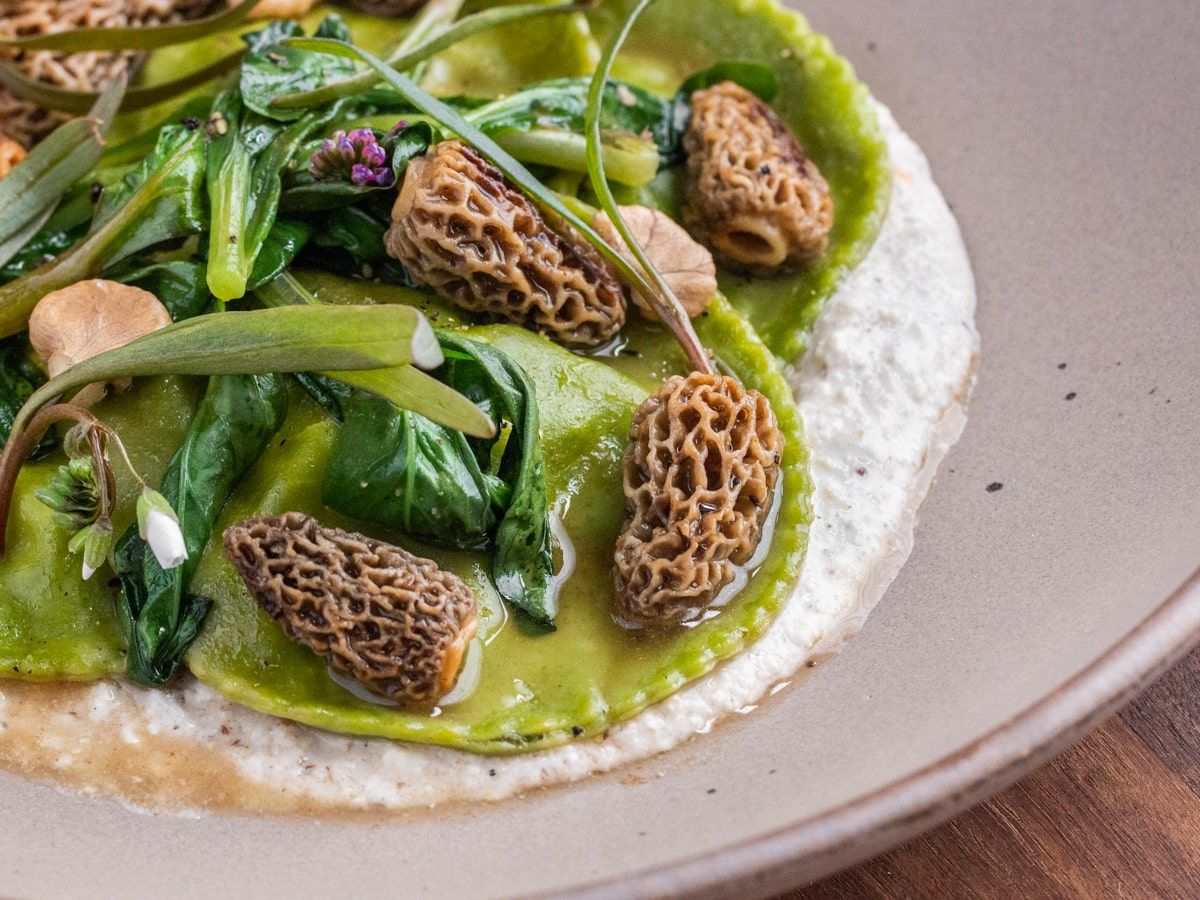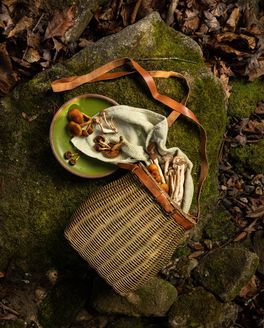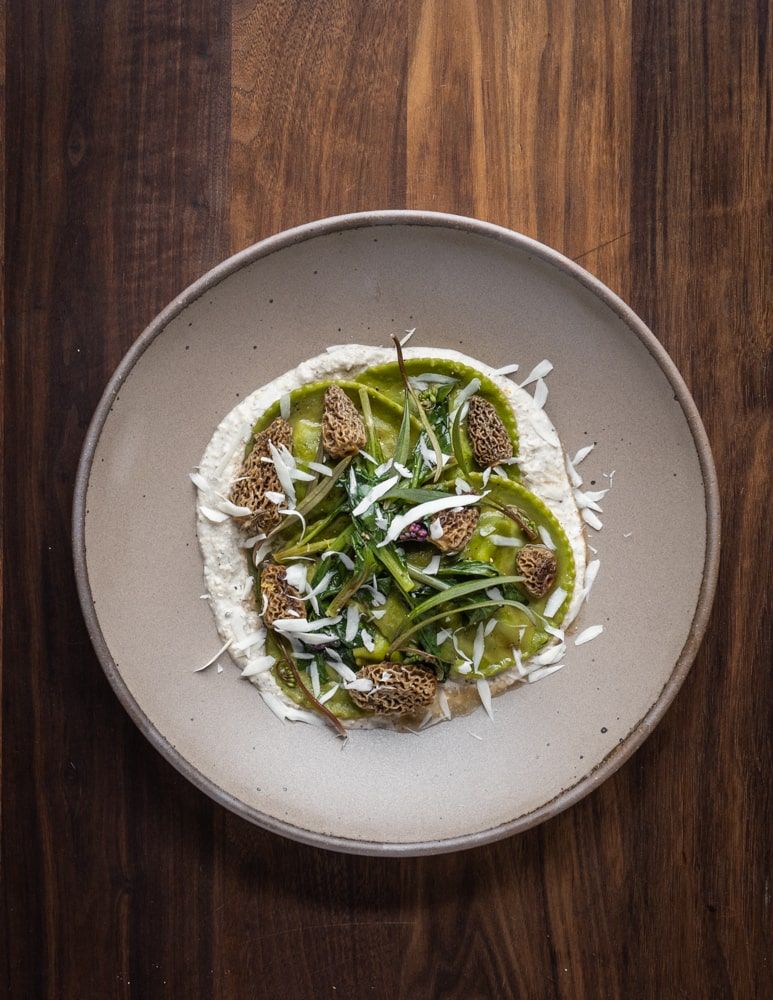
In the Field with Alan Bergo
When it comes to finding inspiration from the land, we always look to our friend, Alan Bergo. Alan is an award-winning chef, expert forager and author of The Forager Chef’s Book of Flora, which is one of the cookbooks we’re cooking through during our June Cook-a-Long. And we’ll have his 2022 James Beard Award-finalist series, Field Forest Feast, streaming on Tastemade in the background!
To celebrate our newest glaze, Fiddlehead, Alan guided us through his local woods to show us how to make one of his favorite dishes.
After a long Midwestern winter, fresh, wild spring greens are what I crave the most. Around the world, springtime means the rebirth of edible plants, and Preboggion, an Italian mixture of wild plants, is a fascinating example of how people around the world gather and enjoy wild greens to celebrate spring.
The greens for the preboggion can be boiled and cooked as you would any other greens, and they’re sometimes served like that, but what’s inspired me the most is a traditional filled pasta made with them known as pansotti au salsa di noci, or ravioli filled with wild greens with a walnut sauce.
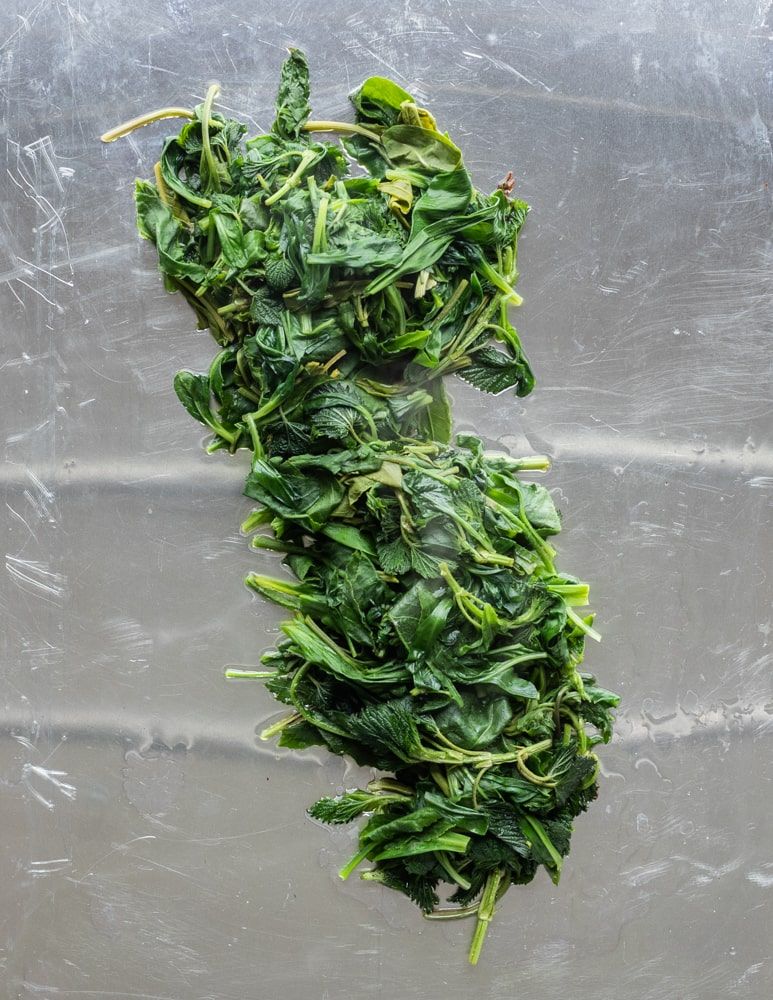
I’ll share my method for making the filled pasta, but first, I think it’s helpful to look at what constitutes the preboggion mixture, and, from there, how you can adapt it to greens that grow near you.
Like a lot of localized/regional foods, what exactly goes into the preboggion can vary depending on who makes it. One thing that’s for certain is that it’s a large blend of greens. Some accounts I’ve read say it must be made with 7 plants, others 5 or 12, and a book I have in Italian called Piantee Spontanee lists 23.
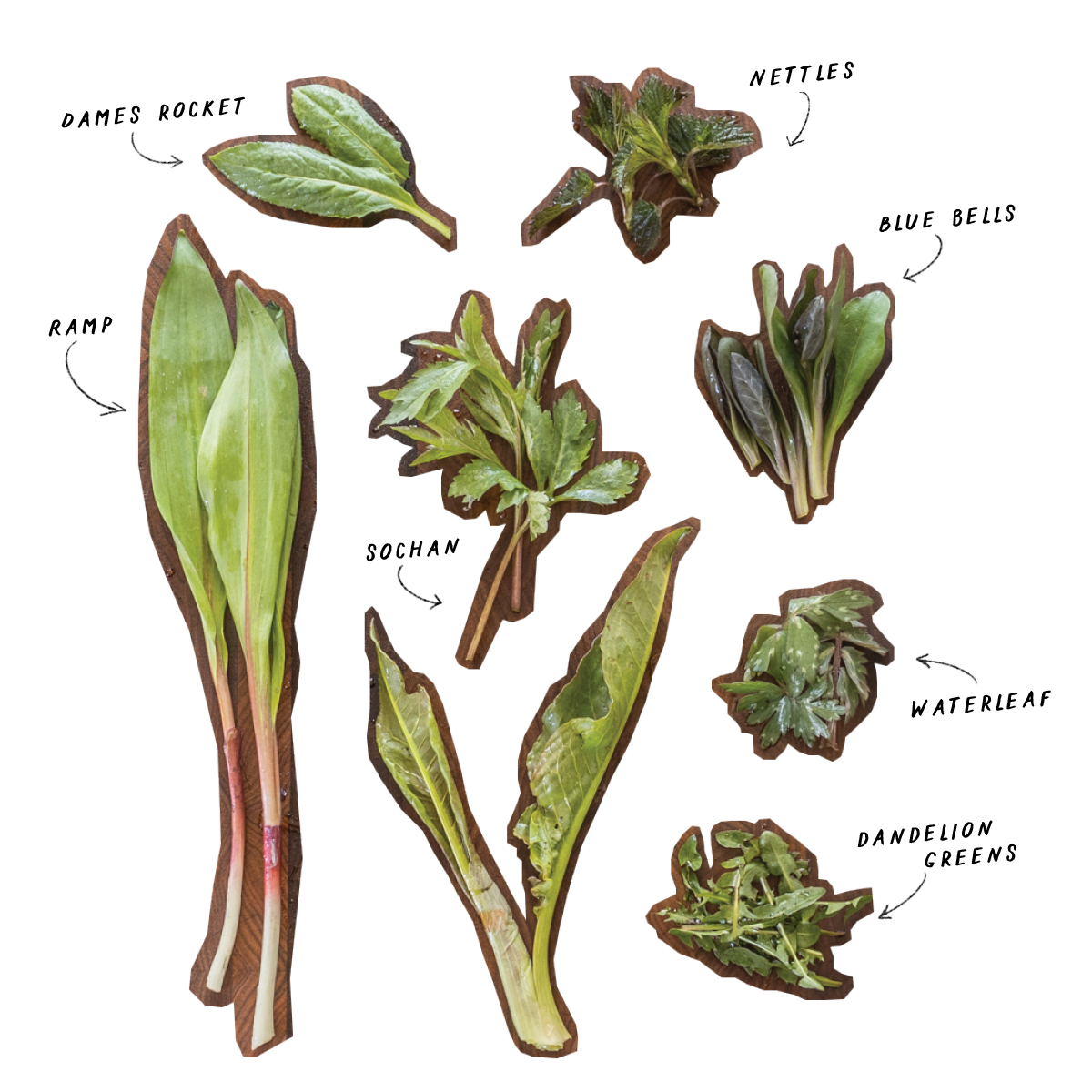
There’s few lists of specific greens used online (for more detail, here is an educational blog post Alan wrote on his site) - here’s a few examples that are common:
Creeping bellflower
Dandelions
Bladder campion
Sow thistle
Borage
Wild Poppy
Nettles
Those greens are just a few examples of what you might use, but, there’s one green that stands out above the rest. According to the Oxford Encyclopedia of Italian Food, borage greens are the most important.
Borage is a summer green where I live, but there’s a few cousins available in the spring that are similar, specifically Virginia bluebells. Both borage and Virginia bluebells, while they aren’t bitter, do have a rich taste that may be strong for some people alone. Cooking them in blend of greens tucked into ravioli is a great way to cook them that anyone will enjoy.
If you’d like to make the ravioli I describe below, I suggest you harvest a variety of plants-whatever you have near you as long as it’s a mix equal to or greater than seven greens. If you don’t have wild greens or borage, you could use a mixture of spinach, chard, fennel tops, parsley, carrot and mustard greens, or just whatever you have near you. Think of the list and suggestions here as descriptive, not prescriptive. Use your imagination and enjoy making your own blend.
Italian Prebboggion Ravioli
If you don’t make ravioli often, cut this recipe in half as it’s an afternoon project. Expect 6 ravioli for an entrée, and 1/3 cup of walnut sauce per person.
Yield: Makes about 40 ravioli
Ingredients
Green Pasta Dough
10 egg yolks
1 lb 00 flour
2 cups (3 oz) wild greens, washed and cleaned
Water, as needed to bring the dough together, a few tablespoons
1.5 teaspoons fine salt
Semolina flour, as needed to prevent sticking
Method
Steam or blanch the greens in salted water until just wilted-30 seconds or so, then drain, allow to cool and squeeze dry. Combine the blanched greens and egg yolks in a blender and puree until smooth. Combine the flour and salt, along with the egg-greens puree in the bowl of a stand mixer with the paddle attachment. Work the dough, adding teaspoons of water as needed to bring the dough together. When the dough comes together in a smooth mass, switch to the dough hook and knead until smooth, then wrap in plastic and allow to rest for at least 15 minutes before rolling out.
Filling
1.5 lbs wild greens, preferably using a combination of 50% borage leaves, or a blend of soft greens like swiss chard or spinach
8 oz chevre or ¾ cup
2 egg yolks
3 tablespoons grated parmesan
Kosher salt and fresh ground black pepper, to taste
A few scrapes of fresh nutmeg
1 recipe green pasta (follows)
Fresh grated lemon zest, to taste
Method
Blanch the greens in lightly salted water until they’re just tender and taste good to you. Remove the greens to cold water to cool, drain, squeeze dry, and chop finely, then combine with the remaining ingredients for the filling.
Roll out the pasta to the second-thinnest setting on the pasta machine, then cut into rough 3 inch by 15 inch rectangles. Brush the sheet of pasta lightly with beaten egg, then evenly divide 6 tablespoon-sized balls in the middle of the sheet, cut into squares, and fold the edges over to make a triangle-shaped ravioli. You can also make them into circular ravioli as I demonstrate in the video.
Fold over the two opposite points of each square and seal to give the shape of large tortellini. Lightly dust with semolina and transfer to a cookie sheet while you roll out the rest of the dough.

Walnut Sauce (makes about 2 cups)
2oz bread, preferably sourdough, crust removed
¼ teaspoon minced garlic
3/4 cup milk, chicken stock, or pasta water in a pinch
¾ cup toasted walnuts
¼ cup virgin olive oil
1 oz Grana Padano, or other good parmesan, grated, plus more for serving
2 tablespoons chopped fresh oregano or marjoram (optional)
A good pinch of kosher salt, to taste
Method
For the walnut sauce, tear the bread into pieces and soak in the milk or chicken stock, then squeeze dry and combine in a blender with the seeds, garlic, parmesan, salt and oil blend the sauce until the seeds are well ground, but still a little chunky, adding the milk or chicken stock to make a sauce. Taste, adjust the seasoning, transfer to a container and reserve. Traditionally the sauce is served cold, but you can gently warm it up-just don’t boil it as the cheese will stiffen.
Finishing and Serving as pictured (optional)
To serve 4 people
4 tablespoons unsalted butter
1/3 cup dry white wine
A splash of pasta water
Grated Grana Padano or high-quality parmesan cheese, for serving
4-5 medium-sized morel mushrooms per person (optional)
An extra handful of virginia bluebell or other greens (optional)
A good squeeze of fresh lemon juice
Cooking and Serving
To cook the ravioli, bring a gallon (or less if your stock pot is small) of salted water to a boil, then cook the ravioli until they float, working in batches if needed, and transfer to a large bowl with 1/3 cup of the walnut sauce per person.
Meanwhile, heat up 1 tablespoon of butter per serving in a large stainless steel sauté pan, heating until the butter browns lightly and begins to smell like toasted nuts. Add the morels to the pan if using and cook for 4-5 minutes or until browned.
Add the wine to the pan, along with the ravioli and bluebell greens if using and a splash of pasta water, cook for a minute, double check the seasoning and adjust as needed. Spoon 1/3 cup of the walnut sauce onto each of four pre-heated dinner plates, arrange the ravioli, mushrooms and greens on the sauce, drizzle over some of the brown butter, garnish with grated parmesan, and serve.
